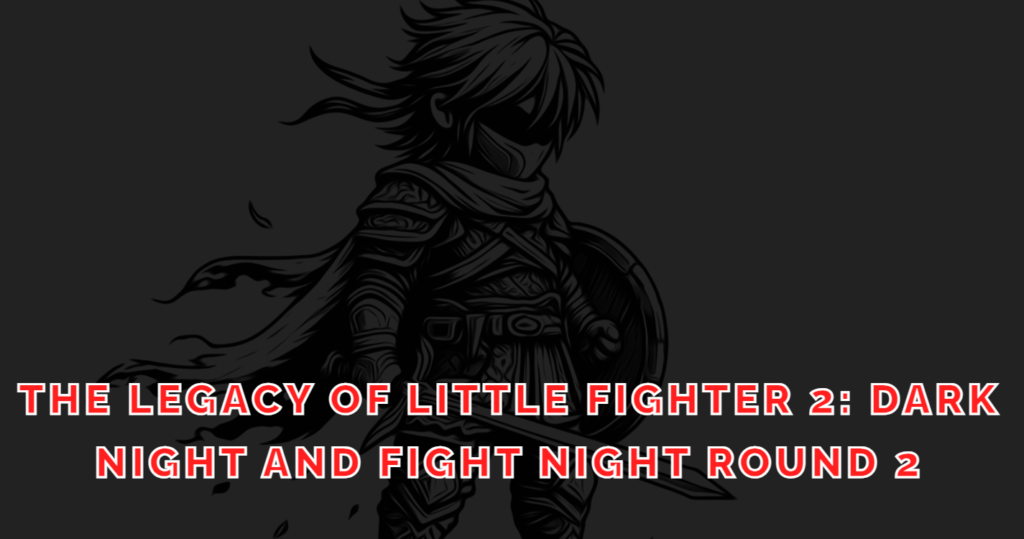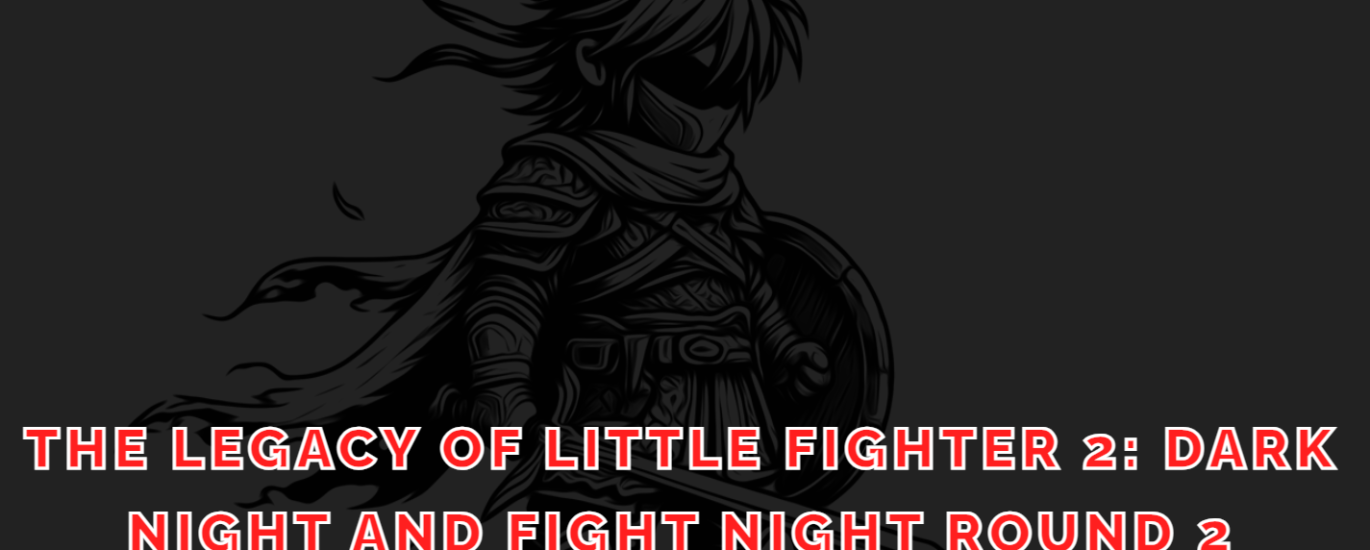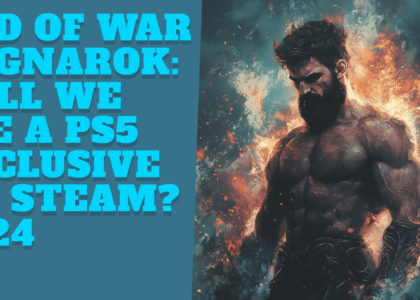The world of video games is vast, offering titles that appeal to different gaming preferences. Among the most unique games to grace the landscape are Little Fighter 2: Dark Night and Fight Night Round 2. Though starkly different in genre and presentation, these titles have left a lasting mark on the gaming community. This article explores their mechanics, appeal, and legacy, highlighting how they resonated with gamers worldwide.
Little Fighter 2: Dark Night – A Retro Beat-‘Em-Up Adventure
The Origins and Concept
Developed as a modification (mod) of the original Little Fighter 2, Dark Night adds a fresh spin to the beloved side-scrolling beat-’em-up genre. The original Little Fighter 2, created by Marti Wong and Starkey Wong, became popular for its simplistic yet addictive gameplay, where players chose characters and engaged in fast-paced, chaotic battles against AI or other players. The Dark Night mod expanded upon this by introducing darker aesthetics, revamped characters, and new game mechanics.
Gameplay and Features
The gameplay retains its arcade roots, allowing players to choose between heroes and villains, each with unique abilities and fighting styles. The mod adds a mysterious story campaign, immersing players in a dark, perilous world filled with challenging bosses and well-designed stages. Its simplistic two-button attack system—combined with special moves, team dynamics, and item pickups—makes it accessible to newcomers while retaining depth for veterans.
Key additions in Dark Night include enhanced visual effects, new soundtracks, and unique enemy designs, adding depth to an already beloved game. These enhancements not only elevated the mod’s reputation but also extended the replay value of the original Little Fighter 2.

The Enduring Appeal of Little Fighter 2: A Classic of the Retro Gaming Era
Little Fighter 2 (LF2), developed by Marti Wong and Starsky Wong in 1999, is a timeless gem in the world of indie gaming. Combining simple mechanics, pixelated graphics, and engaging multiplayer battles, the game captivated players worldwide. Over two decades later, it continues to enjoy a cult following, with fans still diving into its chaotic yet charming brawls.
This article explores the legacy of Little Fighter 2, examining its gameplay, unique features, modding community, and why it remains a standout title in the retro gaming landscape.
The Origins of Little Fighter 2
Following the success of the original Little Fighter, the Wong brothers sought to refine their formula for multiplayer mayhem. Little Fighter 2 was born as an evolution of its predecessor, featuring improved visuals, a broader character roster, and more dynamic combat mechanics. Its release came at a time when LAN gaming was on the rise, making its local multiplayer capabilities a perfect fit for gaming parties and competitions.
The game’s charm lies in its simplicity. Players control small, pixelated fighters in side-scrolling arenas, engaging in battles that mix traditional beat-’em-up action with strategic elements such as item use, teamwork, and character abilities.
Core Gameplay Features
Intuitive Controls and Fast-Paced Combat
Little Fighter 2 is designed to be accessible, with straightforward controls that even newcomers can quickly grasp. Players move their characters using directional keys and perform attacks, blocks, or special moves using just a handful of buttons. Despite its simplicity, the game offers surprising depth, as each character has unique abilities and attack combinations.
Diverse Game Modes
- Versus Mode: Up to eight players can engage in chaotic free-for-all battles or team-based matches.
- Stage Mode: A single-player or cooperative campaign where players fight through waves of enemies and bosses.
- Battle Mode: A strategic mode where players assemble armies and lead them into large-scale skirmishes.
- Championship Mode: A tournament-style setup for players to test their skills.
This variety ensures that Little Fighter 2 never feels repetitive, keeping players engaged across countless matches.
Iconic Characters
The game’s roster includes 24 distinct fighters, each with their own move sets, strengths, and weaknesses. From the balanced martial artist Deep to the spell-casting wizard LouisEX, every character offers a unique playstyle. Players can experiment with their favorites or master different characters for varied experiences.
The Role of the Modding CommunityThe Legacy of Little Fighter 2: Dark Night and Fight Night Round 2: A Tale of Contrasts 2024
One of the key reasons for Little Fighter 2’s enduring popularity is its thriving modding community. Over the years, fans have created a plethora of modifications, adding new characters, stages, and storylines. Popular mods include:
- Little Fighter 2 Night: A darker, more atmospheric take on the original, featuring new enemies and enhanced visuals.
- Dragon Ball Z Mods: Adding characters and abilities from the popular anime series.
- Custom Campaigns: Fan-made storylines with fresh challenges and unique bosses.
These mods breathe new life into the game, ensuring that players always have something fresh to explore.
Multiplayer Madness: A Social Experience
Little Fighter 2 shines brightest in multiplayer. Its chaotic battles, unpredictable outcomes, and cooperative modes make it a fantastic choice for social gaming. Players can connect via LAN or locally on the same keyboard (a nostalgic nod to its late-90s roots), fostering an atmosphere of camaraderie and friendly competition.
The simplicity of the controls also makes it an ideal party game. Whether players are seasoned veterans or complete newcomers, they can quickly dive into the action and enjoy themselves.
Comparison to Other Retro Beat-’Em-Ups
| Feature | Little Fighter 2 | Streets of Rage | Castle Crashers |
|---|---|---|---|
| Graphics Style | Pixelated, cartoony | Detailed sprites | Hand-drawn animation |
| Gameplay Focus | Multiplayer chaos, strategy | Linear beat-’em-up action | Cooperative RPG elements |
| Character Variety | 24 fighters, unique abilities | Selectable characters | Unlockable characters |
| Modding Capability | Extensive | Minimal | None |
| Replay Value | High | Moderate | High |
While games like Streets of Rage and Castle Crashers are beloved for their polished gameplay, Little Fighter 2 sets itself apart with its emphasis on multiplayer freedom, accessible modding tools, and chaotic combat scenarios.
The Enduring Legacy
Despite its humble beginnings, Little Fighter 2 has become a cultural touchstone in retro gaming circles.
- Timeless Gameplay: The mechanics are easy to learn yet hard to master, ensuring that players of all skill levels can enjoy it.
- Creative Freedom: The modding scene allows fans to personalize their experiences, keeping the game fresh and relevant.
- Nostalgia Factor: For many, Little Fighter 2 was a gateway into gaming during their childhood, creating emotional attachments that endure over time.
Challenges in the Modern Era
While Little Fighter 2 has maintained a dedicated fanbase, it faces challenges in attracting new players. The game’s pixel-art graphics and simplistic mechanics may feel outdated compared to modern titles. Additionally, the rise of online multiplayer gaming has shifted attention away from local multiplayer experiences, which are central to the Little Fighter 2 experience.
For those seeking a break from hyper-realistic graphics and complex mechanics, Little Fighter 2 offers a refreshing, nostalgic escape.
Final Thoughts
Little Fighter 2 is more than just a game; it’s a testament to the creativity and passion of indie developers. Its enduring legacy is a tribute to its simple yet addictive gameplay, a diverse roster of characters, and the vibrant community that has kept it alive. Whether you’re revisiting it for nostalgia or discovering it for the first time, Little Fighter 2 remains a must-play classic for fans of retro gaming.
Fight Night Round 2 – The Pinnacle of Boxing Simulations
A New Era for Boxing Games
While Little Fighter 2 embraced pixelated chaos, Fight Night Round 2 represented a shift toward realism in sports gaming. Released in 2005 by EA Sports, this title became the gold standard for boxing simulations, thanks to its revolutionary mechanics and immersive presentation. Centered around boxing legend Little Mac, it captured the spirit of the sport while delivering a highly polished gameplay experience.
Technical Brilliance
Fight Night Round 2 stood out with its revolutionary “Total Punch Control” system, which allowed players to execute punches using the analog stick. This mechanic gave players greater control over their fighters, emphasizing strategy and precision over button-mashing. The addition of Haymakers—powerful punches that required careful timing—further enhanced the tactical depth.
Graphically, the game was a marvel for its time. Character models featured realistic sweat, facial damage, and movement, creating an authentic depiction of the boxing ring. Coupled with dynamic crowd reactions and superb commentary, Fight Night Round 2 delivered an unmatched level of immersion.
A Comparison of Gameplay
| Feature | Little Fighter 2: Dark Night | Fight Night Round 2 |
|---|---|---|
| Genre | Beat-’em-up/Arcade | Sports/Boxing Simulation |
| Visual Style | Retro, pixel-art, dark-themed | Realistic 3D graphics |
| Controls | Simplistic, two-button layout | Analog-based Total Punch Control |
| Game Modes | Campaign, multiplayer, versus | Career mode, exhibition, multiplayer |
| Replay Value | High, thanks to mods and multiplayer | High, due to Career mode and realism |
| Target Audience | Casual and retro gamers | Sports and simulation enthusiasts |
Cultural Impact and LegacyThe Legacy of Little Fighter 2: Dark Night and Fight Night Round 2: A Tale of Contrasts 2024
Despite their differences, both games share the common trait of being iconic in their respective niches. Little Fighter 2: Dark Night remains a cult classic within retro gaming communities, often celebrated for its creative modding scene. The ability to modify the game enabled players to breathe new life into it, ensuring its longevity. To this day, it enjoys a dedicated fan base, keeping its legacy alive through online forums and custom mods.
On the other hand, Fight Night Round 2 cemented itself as one of the greatest boxing games of all time. Its focus on realism and strategy influenced future titles in the genre, including later installments in the Fight Night series. The game also garnered mainstream appeal, bringing boxing simulations to a wider audience.
The Core Differences in Player Experience
The contrasting gameplay styles of Little Fighter 2: Dark Night and Fight Night Round 2 make them appealing to vastly different audiences. Dark Night focuses on quick, cooperative action and retro charm. It’s perfect for casual sessions with friends or nostalgic dives into pixelated chaos. On the other hand, Fight Night Round 2 appeals to those seeking precision and strategy. Its career mode demands dedication, and the focus on realism provides an entirely different type of thrill.
Where Dark Night thrives on creativity and simplicity, Fight Night Round 2 impresses with its depth and polish. Both games are timeless in their own right but are designed to cater to unique gaming preferences.
Final Thoughts
Little Fighter 2: Dark Night and Fight Night Round 2 are emblematic of the diverse gaming landscape. One brings the thrill of cooperative, fast-paced combat, while the other immerses players in the technical, strategic world of professional boxing. Each game has carved out its place in gaming history, showcasing the power of innovation, creativity, and passion in game development. Whether you’re a fan of retro arcade-style beat-’em-ups or realistic sports simulations, these titles offer experiences that are as captivating today as when they first launched.
Table of Contents
The Enduring Appeal of Little Fighter 2: A Classic of the Retro Gaming Era
Little Fighter 2 (LF2), developed by Marti Wong and Starsky Wong in 1999, is a timeless gem in the world of indie gaming. Combining simple mechanics, pixelated graphics, and engaging multiplayer battles, the game captivated players worldwide. Over two decades later, it continues to enjoy a cult following, with fans still diving into its chaotic yet charming brawls.
This article explores the legacy of Little Fighter 2, examining its gameplay, unique features, modding community, and why it remains a standout title in the retro gaming landscape.
The Origins of Little Fighter 2
Following the success of the original Little Fighter, the Wong brothers sought to refine their formula for multiplayer mayhem. Little Fighter 2 was born as an evolution of its predecessor, featuring improved visuals, a broader character roster, and more dynamic combat mechanics. Its release came at a time when LAN gaming was on the rise, making its local multiplayer capabilities a perfect fit for gaming parties and competitions.
The game’s charm lies in its simplicity. Players control small, pixelated fighters in side-scrolling arenas, engaging in battles that mix traditional beat-’em-up action with strategic elements such as item use, teamwork, and character abilities.
Core Gameplay Features
Intuitive Controls and Fast-Paced Combat
Little Fighter 2 is designed to be accessible, with straightforward controls that even newcomers can quickly grasp. Players move their characters using directional keys and perform attacks, blocks, or special moves using just a handful of buttons. Despite its simplicity, the game offers surprising depth, as each character has unique abilities and attack combinations.
Diverse Game Modes
- Versus Mode: Up to eight players can engage in chaotic free-for-all battles or team-based matches.
- Stage Mode: A single-player or cooperative campaign where players fight through waves of enemies and bosses.
- Battle Mode: A strategic mode where players assemble armies and lead them into large-scale skirmishes.
- Championship Mode: A tournament-style setup for players to test their skills.
This variety ensures that Little Fighter 2 never feels repetitive, keeping players engaged across countless matches.
Iconic Characters
The game’s roster includes 24 distinct fighters, each with their own move sets, strengths, and weaknesses. From the balanced martial artist Deep to the spell-casting wizard LouisEX, every character offers a unique playstyle. Players can experiment with their favorites or master different characters for varied experiences.
The Role of the Modding Community
One of the key reasons for Little Fighter 2’s enduring popularity is its thriving modding community. Over the years, fans have created a plethora of modifications, adding new characters, stages, and storylines. Popular mods include:
- Little Fighter 2 Night: A darker, more atmospheric take on the original, featuring new enemies and enhanced visuals.
- Dragon Ball Z Mods: Adding characters and abilities from the popular anime series.
- Custom Campaigns: Fan-made storylines with fresh challenges and unique bosses.
These mods breathe new life into the game, ensuring that players always have something fresh to explore.
Multiplayer Madness: A Social Experience
Little Fighter 2 shines brightest in multiplayer. Its chaotic battles, unpredictable outcomes, and cooperative modes make it a fantastic choice for social gaming. Players can connect via LAN or locally on the same keyboard (a nostalgic nod to its late-90s roots), fostering an atmosphere of camaraderie and friendly competition.
The simplicity of the controls also makes it an ideal party game. Whether players are seasoned veterans or complete newcomers, they can quickly dive into the action and enjoy themselves.
Comparison to Other Retro Beat-’Em-Ups
| Feature | Little Fighter 2 | Streets of Rage | Castle Crashers |
|---|---|---|---|
| Graphics Style | Pixelated, cartoony | Detailed sprites | Hand-drawn animation |
| Gameplay Focus | Multiplayer chaos, strategy | Linear beat-’em-up action | Cooperative RPG elements |
| Character Variety | 24 fighters, unique abilities | Selectable characters | Unlockable characters |
| Modding Capability | Extensive | Minimal | None |
| Replay Value | High | Moderate | High |
While games like Streets of Rage and Castle Crashers are beloved for their polished gameplay, Little Fighter 2 sets itself apart with its emphasis on multiplayer freedom, accessible modding tools, and chaotic combat scenarios.
The Enduring Legacy
Despite its humble beginnings, Little Fighter 2 has become a cultural touchstone in retro gaming circles.
- Timeless Gameplay: The mechanics are easy to learn yet hard to master, ensuring that players of all skill levels can enjoy it.
- Creative Freedom: The modding scene allows fans to personalize their experiences, keeping the game fresh and relevant.
- Nostalgia Factor: For many, Little Fighter 2 was a gateway into gaming during their childhood, creating emotional attachments that endure over time.
Challenges in the Modern Era
While Little Fighter 2 has maintained a dedicated fanbase, it faces challenges in attracting new players. The game’s pixel-art graphics and simplistic mechanics may feel outdated compared to modern titles. Additionally, the rise of online multiplayer gaming has shifted attention away from local multiplayer experiences, which are central to the Little Fighter 2 experience.
For those seeking a break from hyper-realistic graphics and complex mechanics, Little Fighter 2 offers a refreshing, nostalgic escape.
Final Thoughts
Little Fighter 2 is more than just a game; it’s a testament to the creativity and passion of indie developers. Its enduring legacy is a tribute to its simple yet addictive gameplay, a diverse roster of characters, and the vibrant community that has kept it alive. Whether you’re revisiting it for nostalgia or discovering it for the first time, Little Fighter 2 remains a must-play classic for fans of retro gaming.





